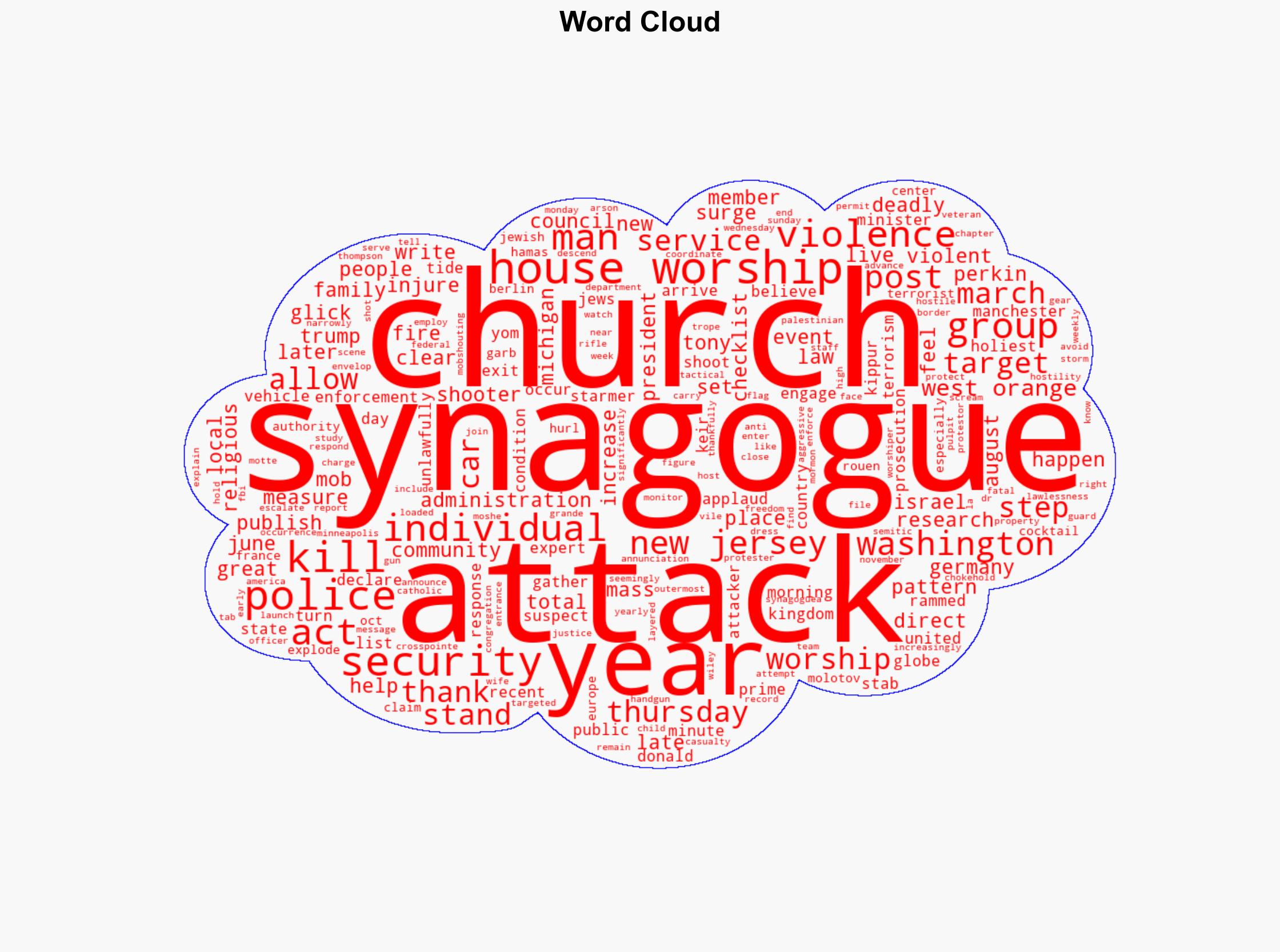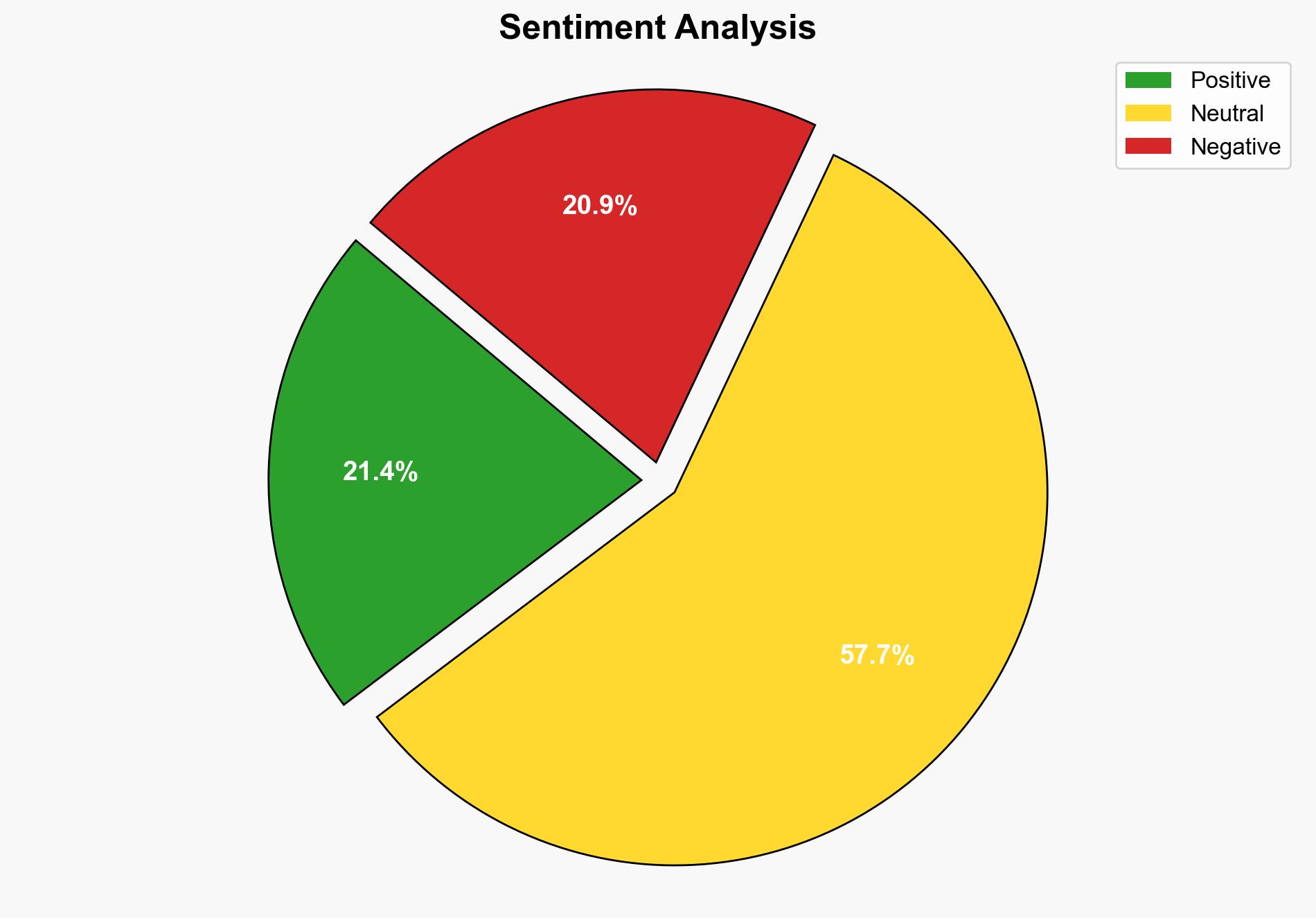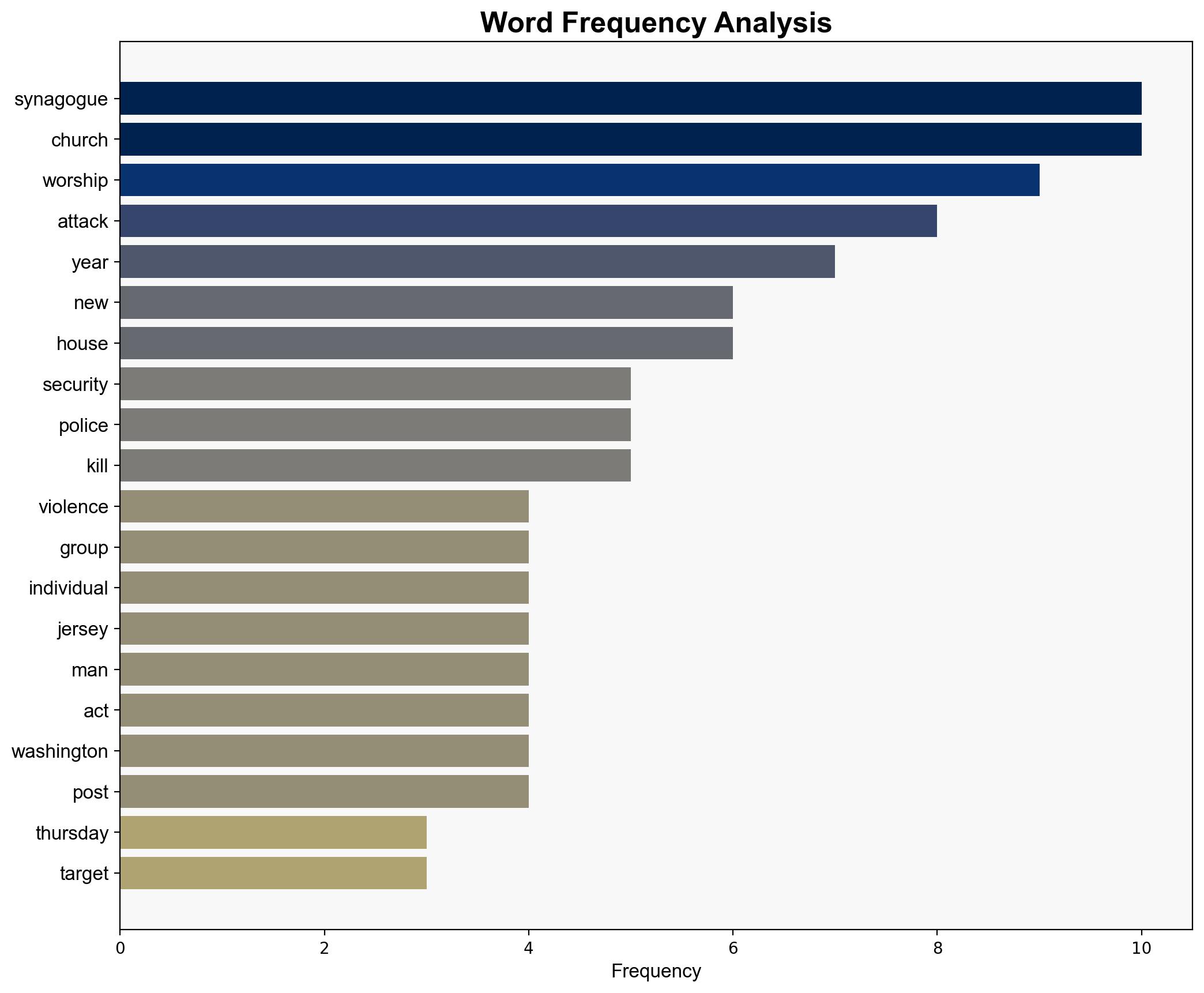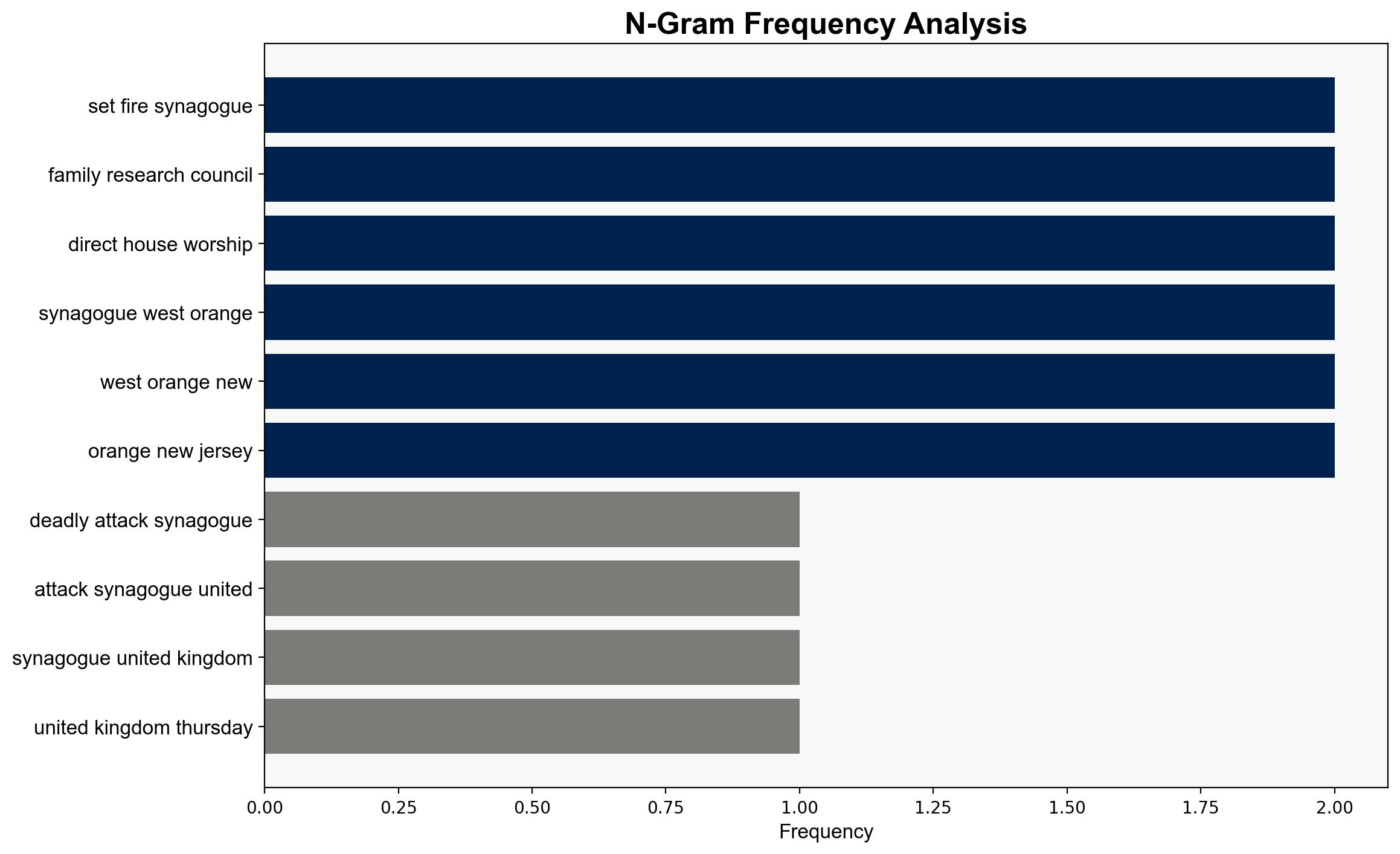As Deadly Violence Against Houses of Worship Rises So Do Security Measures – Daily Signal
Published on: 2025-10-05
Intelligence Report: As Deadly Violence Against Houses of Worship Rises So Do Security Measures – Daily Signal
1. BLUF (Bottom Line Up Front)
The increase in violence against houses of worship globally is likely driven by both ideological extremism and opportunistic attacks. The most supported hypothesis is that these attacks are primarily ideologically motivated, with a high confidence level. Recommended actions include enhancing intelligence sharing and community engagement to preemptively identify threats.
2. Competing Hypotheses
1. **Ideological Extremism Hypothesis**: The surge in violence against houses of worship is primarily driven by ideological extremism, including anti-Semitic and anti-religious sentiments, as evidenced by coordinated attacks and the use of symbolic dates.
2. **Opportunistic Violence Hypothesis**: The increase in attacks is opportunistic, with perpetrators exploiting the symbolic nature of religious sites to gain attention or further personal grievances, rather than being driven by a coherent ideological agenda.
Using the Analysis of Competing Hypotheses (ACH) 2.0, the Ideological Extremism Hypothesis is better supported due to the pattern of attacks on significant religious dates and the involvement of known extremist groups.
3. Key Assumptions and Red Flags
– **Assumptions**: It is assumed that all reported attacks are accurately attributed to ideological motives. This may overlook personal grievances or mental health issues as factors.
– **Red Flags**: The potential for underreporting or misreporting of incidents due to political or media bias. The lack of detailed information on the attackers’ backgrounds and motivations is a significant blind spot.
4. Implications and Strategic Risks
The pattern of attacks suggests a risk of further escalation, potentially leading to increased sectarian tensions and retaliatory violence. The psychological impact on religious communities could lead to decreased public participation in religious activities. Economically, increased security measures may strain community resources. Geopolitically, these incidents could exacerbate international tensions, particularly where foreign actors are involved.
5. Recommendations and Outlook
- Enhance intelligence sharing between law enforcement and religious communities to identify and mitigate threats early.
- Invest in community engagement programs to build resilience and counter extremist narratives.
- Scenario Projections:
- **Best Case**: Successful preemptive actions lead to a decrease in attacks and increased community trust.
- **Worst Case**: Continued escalation results in significant loss of life and heightened international tensions.
- **Most Likely**: Sporadic attacks continue, prompting incremental improvements in security measures and community awareness.
6. Key Individuals and Entities
– Keir Starmer
– Moshe Glick
– Tony Perkins
7. Thematic Tags
national security threats, cybersecurity, counter-terrorism, regional focus





